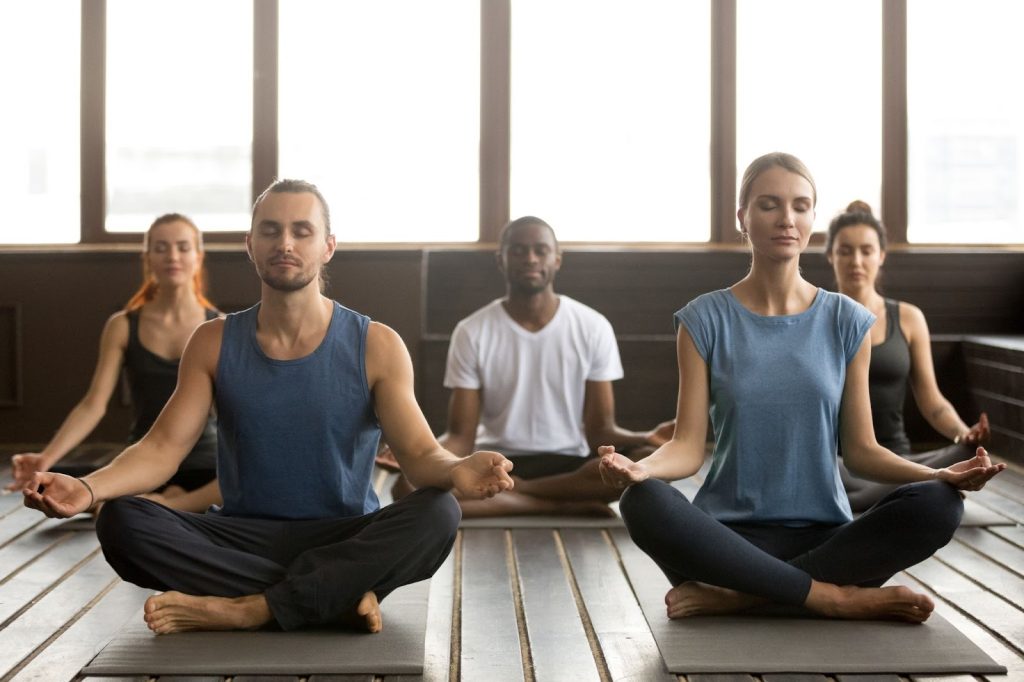
You practice six days a week, no matter what. Missing a day feels lazy. When the teacher says savasana, you sneak out early because you have errands to run. You think pushing harder will get you there faster. But your shoulders ache more each week. That tight hip is not loosening up. Something about this approach is not working.
Your Muscles Need Time to Repair
When you hold a tough pose, your muscles break down a bit. But there is nothing to be afraid of. Your torn muscles are repaired when you rest. Your body patches up those tiny tears and makes the muscle slightly stronger than before.
Practice without rest just keeps tearing the muscle down. You never give your body the chance to complete the repair work. You think you’re working hard, but in truth, you’re wearing yourself out.
The yoga instructor qualification course programs worth attending teach this balance. Recovery is treated with the same importance as effort.
Your Nervous System Needs a Break
Every difficult pose activates stress hormones to some degree. Your heart beats faster, muscles tense up, and your mind sharpens its focus. It’s okay to activate this stress, but in limited doses. But your nervous system needs downtime to shift into recovery mode.
Rest days bring your cortisol levels down. You get to sleep better, and your immune system gets the break it needs. These are not optional luxuries. They determine whether yoga makes you healthier or just more worn out.
Learning Happens During Rest
You work on the crow pose for three weeks straight. No progress. Then you take four days off and come back. Suddenly, you hold it for five seconds on your first try. This pattern is common enough that it cannot be a coincidence.
Your brain consolidates new movement patterns during rest periods. Sleep is when the neural pathways solidify. The physical practice creates the initial pathway. Rest is what makes it stick. Skipping rest can actually slow down how quickly you improve.
Rest Reveals What You Are Ignoring
Constant movement drowns out the subtle signals your body sends. That twinge in your knee gets ignored. The fatigue gets pushed through. The tight spots get forced into stretches. You lose the ability to hear what your body is actually telling you.
Rest creates a quiet space for honest assessment. You get to know about the weak parts of your body due to over-practice. It’s important to pause for some time to check the warning signs in your body early.
Burnout Sneaks Up Slowly
The practice you used to love starts feeling like an obligation. Rolling out your mat takes actual willpower now. Your body feels heavy no matter how much you stretch. This is what happens when intensity never gets balanced with recovery.
A traditional yoga course in Bali often emphasizes this rhythm between effort and ease. The old texts talk about finding the middle way. Rest is not laziness or giving up. Rest is recognizing that sustainable practice needs variation in intensity.
Your Emotions Need Processing Time
Hip openers can bring up old sadness. Backbends might trigger anxiety before the release happens. Yoga reignites the emotions that have been stored in your body. This release is valuable. It is also demanding work.
Practicing intensely every single day might unearth more than you can process in real time. Rest days give your emotional system time to catch up. You need space to actually feel what came up instead of immediately moving on to the next practice.
Take Rest Because Your Body Needs It
When you follow a tough 7 days a week schedule, you start ignoring how you actually feel. An external rule becomes more important than your internal experience. This undermines one of the core lessons yoga offers.
Some days your body has energy for a strong practice. Other days, it needs gentle movement or complete stillness. Learning to honor these changing needs builds self-trust. In my opinion, this is more valuable than any pose you will ever master.
Active Rest Still Counts
Rest does not always mean lying completely still. Sometimes it looks like an easy walk. Other times, it means doing only restorative poses. The difference is that you are not pushing or straining. The movement nourishes instead of depleting.
A holistic yoga education Bali approach recognizes these different forms of rest. Total stillness works for some days. Gentle movement works better for others. Both give your body the recovery time it needs.
Long-Term Practice Requires Rest
You can push hard for a few months. You might see quick improvements at first. But can you keep that pace for five years? Probably not. The goal is not to peak in flexibility right now. The goal is to still be practicing when you are seventy.
Rest makes decades of practice possible. You listen to your body and make the adjustments accordingly. Your practice aligns with your life instead of demanding constant sacrifice. This might seem slower. It actually gets you further in the long run.
Your mat will still be there tomorrow. The rest you take today makes you stronger for the next practice. Sometimes the strongest move is simply choosing to stop for a bit.





